Odds are you’ve never heard of Ineos Automotive – at least not until recently. It’s a start-up brand backed, of all things, by one of the world’s largest chemical companies. The British carmaker last year brought its first model, the rugged Grenadier SUV, to the U.S. market and is in the midst of launching its second product line, the Quartermaster pickup. There could be even more products to come, such as the electrified Fusilier now under development.
Ineos may be small, but it has received a big welcome in the U.S. which already makes up 60% of its global sales. But that could run into big headwinds with the new Trump tariffs going into effect this week.
Headlight.News had a chance to catch up with Lynn Calder, who joined the automotive newcomer as its CEO three years ago. We posed 10 questions, asking her about plans for the U.S., the potential impact of the Trump tariffs, what products may follow and more.
Headlight.News: You and I first met at the Goodwood Festival of Speed a couple years ago, before Ineos came to the U.S. You’re finally here and that’s a big step, isn’t it?
Lynn Calder: Every day passes so quickly and it does feel like we’re a real car company. We’ve got the Grenadier on the road now in 50 countries. (But) we’re looking at the future, at the things we haven’t done yet. I’m proud of where we’ve gotten to on things like quality and profitability. But there are things where I thought we’d be further along, like brand awareness.
HLN: Such as?
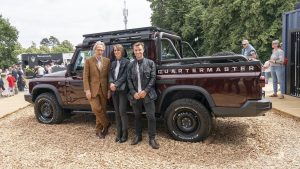
Ineos Automotive CEO Lynn Calder, center, says tariffs would deliver a serious “blow” to the start-up.
Calder: We have a way to go to let people know what we are and what we offer. I think the other thing there is the political side of powertrains. It’s really difficult, at the moment as a European car producer to know exactly what powertrain to bring to market for customers. There’s what regulators want, but that is not really what customers want. So, what are we going to do instead?
HLN: One of your team told me you’re rethinking plans for an electric vehicle, the Fusilier, and may go with a range-extender, rather than an all-electric model.
Calder: We came up with the range-extender idea maybe 15-16 months ago. Pure electric, this is not (a viable) business case because we’re not going to sell enough of them. So, what do we do? We reengineered the range-extender option into the Fuselier and decided that would be our priority. It will have a very small combustion engine that will only charge the batteries, won’t power the wheels. (But Europe is banning all combustion engines) including hybrids. There is a growing recognition they can’t ban everything. If they do, people will only stay in old, less efficient cars.
HLN: What’s the timing for Fuselier? I’ve been told perhaps two years from now.
Calder: It’s on pause. We’re not going live yet with any suppliers. We’re not going to spend our money until there’s clarity (from regulators). I don’t want to build something for regulators that people aren’t going to buy.
More Ineos News
- Ineos Unveils Fusilier — One Off-Roader, Two “Green” Powertrains
- Ineos Charging More for Grenadier Pickup than SUV
- First Drive: Ineos Grenadier
HLN: You’ve launched not only in the U.S. but China?
Calder: Yes, and we’re going against the grain of what other car companies are doing there with a gas engine and a very analog car. We’re very hopeful about it there.
HLN: Getting back to the U.S., Pres. Trump has indicated he will do away with the $7,500 tax credit on EVs. But he’s also expected to place tariffs on imported vehicles. (Editor’s Note: this interview was completed shortly before the tariffs were formally announced.)
Calder: We’re been hearing that for some time. It was on the table during the election campaign, so there’s going to be no surprise in April. I understand there’s a trade deficit situation that needs to be addressed. Europe has a big car industry and will need to decided whether or not they want to negotiate.
HLN: What would be the impact on Ineos?
Calder: As a fledgling car business, with our biggest market in the U.S., it’s easy to see it would b a blow to us at 25% (tariff rates). That’s something we can’t control. We just have to deal with the consequences.
(In a statement following HLN’s interview with Calder she issued a statement expressing “outrage” over the tariff standoff between Europe and the U.S. Calder went on to say ““This is what happens when politicians sit on their hands. As a growing EU-based automobile brand, we are vulnerable to tariffs, and we need our politicians to support our business, our jobs and our economies. We need urgent and direct political intervention on tariffs. We will give whatever support we can to our political leaders to keep the playing field even for small, competitive brands such as Grenadier. But we must see action from EU politicians: only they are in a position to address the issue. Fortunately, we have been planning for tariffs but there is only so much we can do to protect US customers from price rises.)
HLN: Could there be U.S. production in the future to get around tariffs?
Calder: Sure. I go by a very simple manufacturing rule, whether you’re manufacturing chemicals or cars. If our market, as it seems increasingly to be doing, becomes U.S.-centric, U.S.-focused, we have to look at that. Right now, it’s 60% (of Ineos sales) and is growing at a faster rate than anywhere else.
HLN: Why so big?
Calder: It could be temporary but it comes down to some really simple things like size. It’s not a big car here. It is in Europe. It does better in countryside setting than in big cities. We still sell in some cities. London is one of our biggest markets, but in the U.S., size is not a problem. Also in the U.S., it’s being adapted by so much more than the off-road community. It’s got a big lifestyle push in the U.S.
HLN: You have the Grenadier established in the market now and are launching the Quartermaster pickup. The Fusilier may follow. Is this a brand that should be looking at other segments of the market, like a three-row SUV, something that’s a must for most other brands?
Calder: Yeah, we do get a huge amount of feedback on that from our customers and we’re always watching. We’re asking what people want. Some things are small scale, not worth the investment. But where you get critical mass, you’ve got to listen. And I think a longer wheelbase is definitely something we hear a lot. We already did a prototype but it’s quite challenging from a weight perspective, from an engineering perspective and we have to get the design right. Yes, we’re thinking about it. I also think we need something smaller, that’s a bit more urban, a bit cheaper.

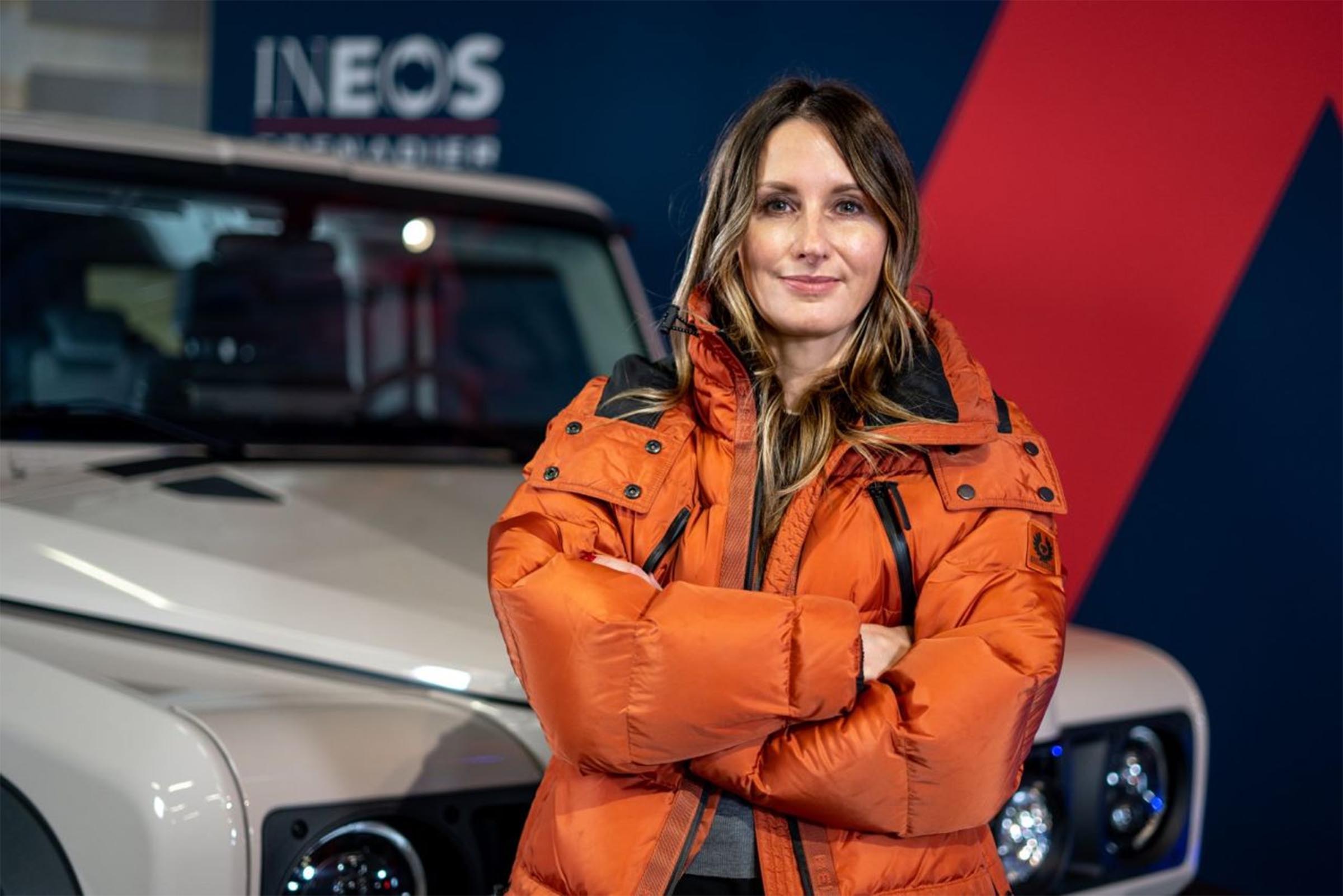
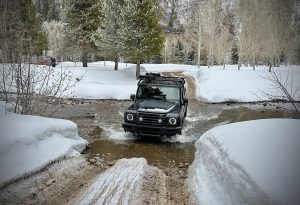

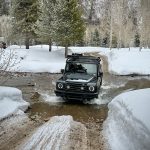
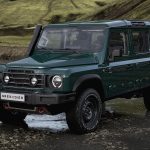
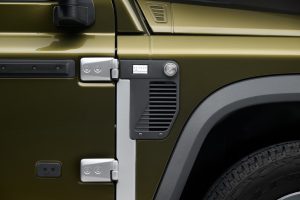
0 Comments